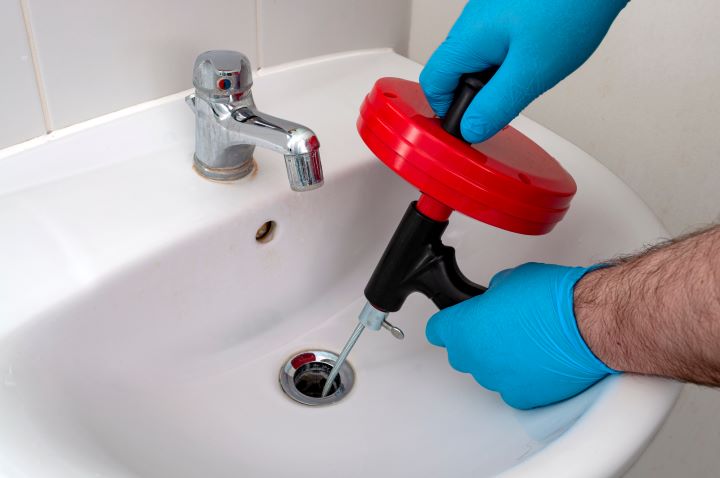Tools and techniques for deep-cleaning narrow tile joints
Narrow tile joints can trap dirt, soap scum, and biological growth, making surfaces look aged and less sanitary. Effective deep-cleaning of tight grout lines requires the right combination of targeted tools, safe cleaning agents, and consistent maintenance to remove stains, inhibit mildew and mold, and protect porous materials. This article explains practical approaches for restoration, sealing, disinfecting, and ongoing upkeep to extend the life of tiled surfaces.

Narrow joints between tiles present unique challenges because they collect residues and are often too tight for standard brushes or vacuums. Successful cleaning starts with assessing the material: is the joint porous cement-based grout, epoxy, or a softer polymer? That informs which cleaning chemistry and tools are safe to use without damaging surrounding tile or degrading joint integrity. Always test a small area first and ensure adequate ventilation when working with stronger cleaners.
What tools suit narrow tile joints?
Select tools sized and shaped to reach confined spaces: narrow grout brushes, interdental brushes, nylon picks, and micro-abrasive pads work well for fine joints. Rotary brush attachments for drills or battery scrubbing tools designed for grout can speed up work on larger areas, but avoid abrasive heads that can widen joints or scratch tile. For delicate tile or historic restoration, hand tools with controlled pressure are preferable. Use soft bristle options for sealed joints and firmer nylon for stubborn stains on unsealed, porous grout.
How to remove stains and mildew effectively?
Address stains by identifying their source—iron or rust, soap scum, hard water deposits, or organic matter such as mildew. For mildew and organic stains, oxygen-based cleaners (hydrogen peroxide or sodium percarbonate formulations) lift discoloration without strong fumes and are safe for many porous surfaces. For mineral scale, use mild acidic cleaners like diluted citric acid or vinegar solutions cautiously and only on tile types that tolerate acid. Apply cleaner, allow dwell time per product instructions, agitate with an appropriate brush, then rinse thoroughly. Repeat as needed, avoiding over-saturation of porous joints.
Disinfecting and mold prevention strategies
Disinfecting helps reduce microbial growth after physical cleaning. Use EPA-registered disinfectants suitable for porous surfaces when label guidance allows; where labels restrict porous use, rely on thorough cleaning and moisture control instead. After cleaning, dry joints completely using fans or dehumidifiers to discourage mold. Regular maintenance and good ventilation in damp areas like bathrooms are key to prevention. Keep in mind that bleach can temporarily lighten mold stains but may not penetrate porous grout to kill roots; combine mechanical removal with appropriate disinfectants when recommended.
Working with porous materials and sealing considerations
Porous grout absorbs liquids and cleaners more readily, so post-cleaning sealing can reduce future staining and microbial colonization. Choose impregnating sealers formulated for grout and porous tile joints, and apply only when joints are fully dry. Sealers create a breathable barrier that eases maintenance but are not permanent—reapply on a periodic schedule based on product guidance and wear. For restoration projects, allow any repair materials to cure completely before sealing. Avoid surface film sealers where they might alter traction or appearance.
Restoration and ongoing maintenance routines
Restoration of heavily stained or damaged joints can require regrouting or targeted spot repairs. Repair steps include removing damaged grout without harming tile edges, selecting a compatible grout mix (cementitious or epoxy), and finishing to match surrounding texture. Once restored, establish a simple maintenance routine: weekly light cleaning with pH-neutral cleaners, immediate removal of spills, and monthly inspection for cracks or soft spots. Regular maintenance prevents deep-set stains and reduces the need for aggressive restoration later.
Choosing cleaning products and safe work practices
Select cleaning products that match tile and grout material and avoid mixing chemicals. Wear appropriate personal protective equipment—gloves, eye protection, and a mask if using sprays or powders. For porous grout, use lower-concentration cleaners and longer dwell times rather than stronger acids that can over-etch surfaces. Keep tools dedicated to cleaning to prevent cross-contamination, and replace or sanitize brushes after heavy mold or bacterial removal. Good lighting and magnification can help locate hidden debris in narrow joints.
This article is for informational purposes only and should not be considered medical advice. Please consult a qualified healthcare professional for personalized guidance and treatment.
Conclusion Deep-cleaning narrow tile joints combines the right tools, matched cleaning agents, and careful technique. Identifying grout porosity and stain type guides safe product choice, while mechanical agitation removes most residue. After cleaning, proper drying and periodic sealing reduce mildew, mold, and stains and support long-term restoration and maintenance. Consistent, gentle upkeep prevents deterioration and preserves the appearance and safety of tiled surfaces without resorting to unnecessarily harsh methods.






